TEDxRaleigh 2016: Why Technology Has Become My Art
This is a transcribed version of the talk I gave at TEDxRaleigh in March of 2016. The full video of the talk can be found at https://youtu.be/IGEwhzKudgY
December 25th, 2002. It was Christmas Day and like any other ten-year-old kid, I was excited to rush down the stairs as soon as daybreak hit and see what was left under the tree. I got down, I was greeted by the lights, I saw the vibrantly colored boxes underneath - but one thing in particular caught my eye. Down under the left side of the tree where my gifts normally were, I saw this dark green, very impressive-looking three ring binder.

And I was a young kid, I'm very confused. I'm like, this is a book, this for school! This isn’t a Christmas present! What? So I open it up, and what I found inside the left-hand cover was a CD case; and the binder itself was a manual for this game development software that I had just been given.
That's how I got my start as a software developer. I've been doing that for the past 13 years; over half of my life. Since then, I've taken up other creative pursuits: drawing, writing music, building musical instruments, and doing the “artsy” side of software development, user experience design.
I learned something valuable through these creative endeavors. I learned that the thing I was most proud of at the end of the day wasn't the thing I created; and it wasn't even the process or the things I learned during the journey of creating it. It was when I took that thing I made and gave it to someone for the first time, and they had this moment, and they connected with it. They were filled with wonder, they were filled with discovery; they learned from it, and tried to figure out what it meant to them, and if it could reframe what they expected from everything else that came after.

When we make something we're not just cutting wood, we're not just writing code. We’re curating a moment in time. Sharing an experience as the most powerful thing we can give anyone. These are the moments that make up our lives, the things that define us. As a creator of anything we owe it to the people whose lives we touch to create these moments.
And we don't do that as engineers. We don't do that as craftsmen. We do that as artists, and by thinking of what we do as an art.
I want to explain to you today how I came to the realization the technology, in itself, could be an art, by illustrating some prominent examples in the tech industry - the industry I work in - that exemplify this idea. But first, I want to stress the fact that cool technology, in itself, doesn't necessarily make a great experience.

This is Google Glass. This is the first real attempt at smart glasses that we had. What it was is this headset you wear like a normal pair of glasses, you have a camera and a prism on your face and a projection screen that only you can see about a foot and a half in front of you. Basically, a hands-free way to use your phone. Any notification that comes through, you’ll see it on the screen. If you're driving, you'll see the directions and the next turn you have to make.
But the more I use this, and the more I developed for it in classes and in personal projects, I discovered the experience just - it just wasn't there. For the person wearing it, you're staring into this prism and it's distracting, the screen keeps popping up and tearing you out of the moments that make up our everyday lives. And for the people around you, it's even weirder! You talk to someone, they don't know if you're paying attention to them, and then people walk by you in the mall or on the street and they just see this camera, they're like, “is he recording me? Is he taking pictures?” It makes people a little bit uneasy.
So they've actually taken this back in to be redesigned for a version 2. And while I was working on some of these projects with friends, we tried to do the same thing. We tried to make it a little bit friendlier so didn't make people quite as uneasy. Due to our limited time and resources, the best we were able to come up with was Googley Glass. That was our attempt.

But great technology can be art, and can create these great moments that help us expect better.
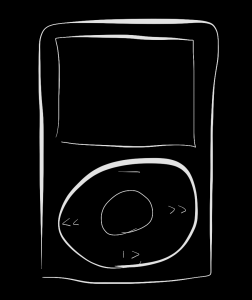
How many of you recognize this shape? This is the Apple iPod, and this is a company that's built its name offering these great experiences time and time again, chaining together these heavily curated moments. From the minute you open the box, you’re guided into discovering what this is. You take it out, it's fully charged; plug it into your computer or sign in to your account, everything just works. Because of these seamless experiences, I’m willing to bet that most of you who own an Apple product? You still have the original box it came in. That’s how good they are at this.

This is the Tesla Model S. I got the experience to test drive one of these, or the opportunity to test drive one of these, back when I graduated in December of 2014. It wasn't because any of special occasion, I decided to call up the Tesla showroom in North Raleigh, and I leveled with the guy. I said, “Hey, I just graduated, and I want to do something to celebrate. As a fresh college graduate, I have no money. I will not be buying one of these anytime soon, but I'm really interested and I want to try this out.” So he said, “Yeah, come on down.”
I want to stress this, this may be the most important point of the talk. Everybody should do this. It was so much fun.
I think the best way to describe this experience is to tell you about one moment that really showed me the true power of the car - and actually, it’s after I had finished driving. I brought my dad along for the trip, and he had taken over the driver's seat at that point. I was texting a friend, I was telling them how awesome it was, how fast the car could go. And unbeknownst to me, the car had stopped on a random back road in Raleigh. There was no one around, and my dad and the sales guy were talking about this whole 0-60 in 3.2 seconds? Decided to try that out without telling me.
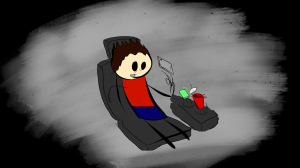
It's not something you want to be surprised by. I was thrown back, neck snapped back, phone flew out of my hand - actually got a minor case of whiplash for a day or two. (I blame you for that, dad.)
But it showed me the power of the car, showed me the feat of engineering for this instant acceleration, that instant power. And the cool meaning of that is that it's actually not the cool part about the car. The cool part is what some people might consider bells and whistles. When you drive on a gravel road for the first time, and you have to raise the suspension of the car yourself to protect the underside of it, it remembers that and the next time you go to it will do that automatically without you doing anything. If you pass by a speed limit sign that says 65 miles an hour, it reads that with a camera, puts it on the speedometer, and lets you know if you're going too fast. Which if you're driving a Tesla, let's be real: you're going too fast! It's these refinements to the driving experience that elevate this from machine into an art.
And this focus on experiences and how they're so important isn't just something I came up with myself. It's not just an opinion I have, it’s been researched by economists, and proven and written about.
When I was taking arts entrepreneurship classes at North Carolina State University, we read a book called The Experience Economy by the economists Gilmore and Pine. They started out by saying business typically works on three levels of increasing value:
- Commodities: the raw materials everything else is made out of,
- Goods: the products we buy off the shelf, and
- Services: the things people do for us.
As they become more valuable we're going to pay more for them. But they argue there is a fourth level above all of that, and that fourth level is where we create brand loyalty, it’s where we keep people coming back, and where people spread our vision on their own accord. That's when we offer an experience.
Think about Disney World or Starbucks. When you enter their theme parks, or you enter their stores, they curate that entire moment in time for you. Everything you see, smell, touch, interact with; that's all taken care of.
That leaves us with a very important question: How do I actually make one of these experiences? And that comes back to the way we think about art.
Now, when most people think about art, they might think of a song, or painting on canvas, or a dance. When I think of art, I also think of being in the front seat of that car, when all the distractions melted away, and I could just become one with the road (in the times when I was driving!). When I think of art, I think of when I'm writing code, and one change that I make makes the entire system explode into life.When I think of art, I think of slipping on a virtual reality headset and being instantly transported into an entire another existence.
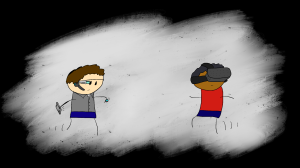
The technology of the future is going to need this kind of art. Because we’re about to enter an era when people have devices all over their bodies: glasses, headsets, watches, shoes that monitor your health. Some of them apparently won't even need to run on batteries, so they’ll be with us all the time! We have these people with these virtual reality headsets on, in complete alternate existences; no concept at all of where they are in the world.
So if we don't think about the moments that define this technology, and how it fits in with people's lives for the users and for the people they interact with… we might have some issues. And these issues might actually hurt the reputation of this technology, and thwart its potential to make the change that it can and do good in the world.

Some of the greatest engineering challenges of this day need artists to figure out the experience behind them. Think about artificial intelligence. This is when computers take in huge amounts of data and use complex reasoning algorithms to figure out things and make decisions. And right now, sure, it can try to guess which word you’re going to type in a text message. It can try to figure out which app you're going to open. But someday, this artificial intelligence will surpass our human intelligence. People are scared of this.
But what if we think of this artificial intelligence as a medium? What if we think about it as a way that it can help people? What if we can use it to learn what people in different cultures expect, and translate our experiences; translate our ideas; bridge the gap and make our world more connected than ever before? What if we can create a virtual assistant that takes care of the things we need to do before we know we need to do them, and let us live our lives to the fullest?
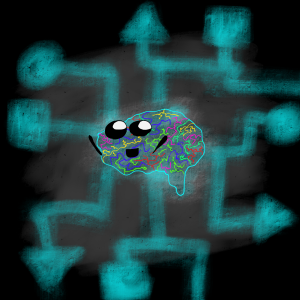
Think about drones. I started working with a drone company recently, and it’s shown me the power of these devices. You can fly over a field, and it will analyze the crops and tell farmers what they need to do to maximize their yield and feed more people than ever before. You can fly over an oil pipeline, analyze the structure, and prevent a natural disaster from happening before it's even a threat.
When a lot of people see these, they’re threatened by them. They see surveillance, they see invasion of property, or invasion of privacy. But if you actually have these moments of holding one in your hand and throwing it like a paper plane into the sky, seeing it take off; pressing a button on the controller and being in control of this thing. You have this great power, and that experience reframes how you think of that device. It shows you what's possible, it gives you a new expectation from that technology.
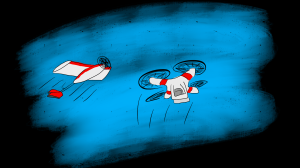
Stepping outside of technology, some of the greatest experiences we have are just shared between two people, and something all of us can relate to. Think about an educator you had when you were in school that reframed math, reframed science in one moment that clarified everything else that came before it. Showed you the possibilities that lay before you. Remember the last time you heard an impassioned story, the last time you heard a song that really touched you on an emotional level.
These people are giving you experiences from their lives, they are curating a moment. This is what I want all of us to do. We can think of the person in the driver's seat of that car. We can think of the person on the other side of the glasses. We can think of the person sitting in front of us, or standing in front of us that we’re having a conversation with.
We have the power to curate these moments, to share these experiences that will change our lives, give us new ideas, show us what can be possible, and teach us to expect better things and to do better things. And this elevates us from being engineers, from being craftsmen, or being educators. This elevates us to becoming artists.
So let's become artists together. Let's stop just making things. Let's start curating moments, let's start sharing experiences. Thank you.
Engineering Experiences
"User experience" has almost become a buzzword in the tech world. In many companies, the term is just code for “user interface that doesn’t look like it’s from the 90s.” Nonetheless, there’s been a huge amount of enthusiasm for whatever user experience actually is lately, and it’s spurred a mass movement of putting design at the forefront of product focus - or at least giving that appearance. This newfound emphasis begs the question, though: how do you truly offer a “user experience?”
Here’s the short answer: you don’t.
At its most basic, an experience is nothing more than a moment in time. If you want to truly create an entire experience, you have to take into account all of the user’s preconceptions about every part of your product: their emotional state, any outside stimuli acting on them… the list goes on. It’s incredibly difficult to account for all of this, and actually, it borders on impossible. As such, most products that offer a great user experience simply aim to keep the moments of interaction with their product as stress-free and pleasant as possible.
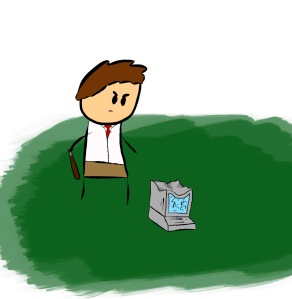
Enabling truly efficient interaction is made possible by a field of study called Human-Computer Interaction, or HCI. HCI studies the mental processes of a user as they interact with a computer interface, and develops rules for the most effective input methods and interface layouts for different tasks. Scientists in this field create interaction models to quantify all of this data, and apply it to reduce the time required for the majority of users to complete a task.
User experience, on the other hand, goes beyond efficiency and explores hedonic response, better known by many as emotion. While many products have gotten incredibly easy to use, great user experience actually makes a person feel good about using a product and keeps them coming back, creating “stickiness” that product companies strive for. By targeting these hedonic reactions, companies can create a product that users connect with and willingly invite into their daily routine, rather than being tasked with dealing with “this new-fangled computer tomfoolery.”
So, how do we embrace the concept of user experience if it’s impossible to actually create an experience? We enable it, and design for experience rather than taking charge of the entire moment. We develop personas for who will be using the product, envision scenarios in which it will be used, and only then consider how we will actually implement the technology.
Developing empathy, or a deep understanding of the user, is the most important part of this product design model. Given this empathy, we can derive what the user will be sensing alongside our product, the mental filters through which they perceive various stimuli, and more. To create a truly immersive product, we would need to stimulate as many of these senses as possible, completely capture the user’s imagination, and hold them within the moment we create. These requirements make empathy an invaluable component of the development process.
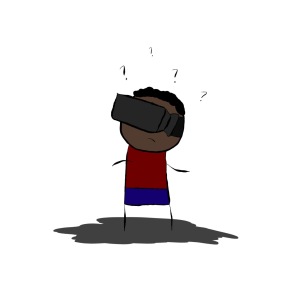
So, how do we go from the idea of user experience to enacting a design that will enable true experiences? We get the engineers on board.
Engineers like to build. We like to take ideas, turn them into realities, and get them out into the world. But we rarely take into account how others will use them. We’re all guilty of this on some level, and I’m by no means exempt from this. We need to account for how our creations will affect people on an emotional level, and design products for experience rather than purely for form or function.
In the spirit of this thinking, why keep designers separate from engineers? The time I’ve spent learning about the design process and design thinking in general has helped me immensely as an engineer, and I feel that designers and engineers working together (or even being the same people!) results in better solutions and happier users.
Let’s work on enabling experiences, and making sure we keep touch with the people we’re building our products to serve.
Creating a Creative Education
As of this Wednesday, I’ve finally earned my Bachelor’s Degree in Computer Science. As I’ve progressed through this curriculum, I’ve observed that all of the core classes are geared towards preparing students to enter the tech industry in some capacity - most prevalently as software engineers. With this in mind, all of these classes are designed to teach either a software development process or how to use a new programming language/tool. Something like this is the norm for every engineering discipline I’ve observed, as entering any engineering field requires a tremendous amount of training before anyone can be considered capable.
The part of this structure that’s jarring is that there seems to be little to no focus on creative thinking in these degree programs. The curriculum designated by these programs does an excellent job of training students to function at a working level in these industries, but arguably at the cost of removing emphasis from the role of the “right brain” in designing true solutions. There are a myriad of articles out there detailing how colleges are killing creativity by focusing too heavily on purely analytical educations, and there don’t seem to be any clear solutions to the issue.
Sure, colleges are preparing students for the job market, but don’t companies seek out creative problem-solvers for the majority of their positions? Wouldn’t a creative education make the student a massively valuable asset to any corporation?
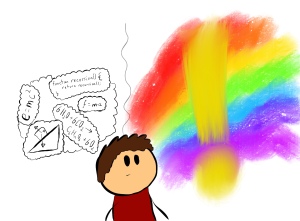
Look at any large university, and the infrastructure is already in place for a change like this. Most major universities have arts classes, independent research programs, and initiatives/clubs to pursue outside interests. But if students want to get involved in any of these initiatives, they have to do so at the expense of their coursework; if not, many of the opportunities that are available are heavily restricted as to who can participate in them. College course loads are demanding, and many students who could flourish with exposure to the arts and outside creative learning can’t seize these opportunities because they simply don’t have the time.
For a solution, let’s look to some of the most successful companies in the world. Companies like Google, Atlassian, LinkedIn and Box promote initiatives within their companies for employees to develop their own ideas, with a clear bent towards betterment of the company’s offerings. Some of these companies do this in the form of “20% time” (an initiative where employees can devote 20% of their working hours toward personally-backed side projects), while others hold hackathon-like events where employees can work on their own or in teams to produce a project they come up with. Many of these companies take the best projects from these efforts and allocate more resources to ensure their success after the hackathon ends. These initiatives promote creativity amongst employees, allow them to take time off from their typical work, and often result in innovative ideas for the company to pursue.
What if colleges did a similar thing? The job of a student is ultimately to learn, and learning isn’t all about memorizing formulas and following processes. If students were encouraged to integrate more creativity and/or art into their curriculums, it could make them exponentially more valuable as prospects for employers. Any time I go to the library, I observe a vast sea of students overburdened with massive amounts of work that inhibit their ability to think outside the box, rather forcing them to fight just to keep their heads above the figurative water. Having been through that experience myself, I can attest to the fact that the initiatives I took part in outside of the standard curriculum (e.g. a course devoted entirely to visual thinking, and most notably my minor in Arts Entrepreneurship) have been an invaluable complement to my “regular” education, though time management seemed nearly impossible at times. If students were encouraged/enabled to set time aside for right-brained thinking, like art or independent research, they would theoretically come out on the other side with a broader wealth of knowledge and a greater retention of their general sanity.

Sure, the college experience would likely take longer this way, but the payoff on the other side could be worth it. Companies like to look for creative individuals, and creative people often tend to end up in leadership roles faster due to producing innovative solutions for problems the company encounters. The job market is also shifting more towards smaller companies and shorter stints per job (in technology, at least), meaning that people generally have a shorter time to make an impact, or have to jump a higher bar to make the cut for a smaller company where resources may be scarce. With this changing corporate landscape, a creative education may become a requirement rather than a convenience before we know it.


